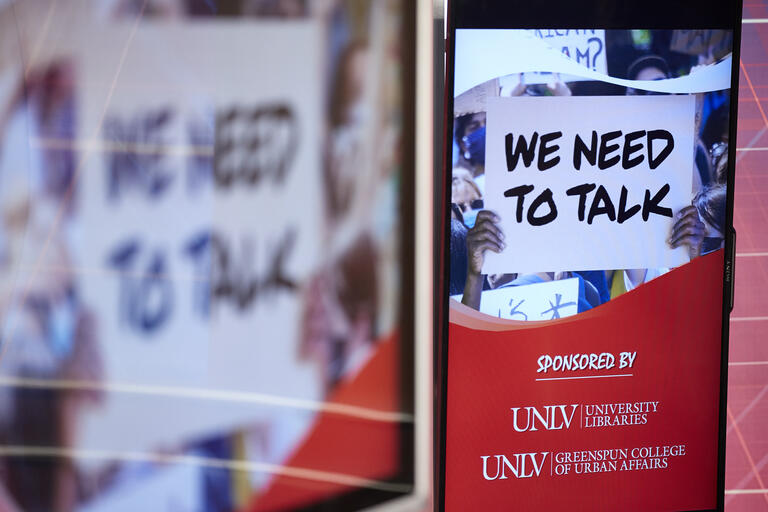UNLV College of Sciences faculty are stepping up to support the local health care community in its fight against the novel coronavirus pandemic. Throughout the college, faculty and staff are contributing to the cause by donating personal protective equipment from laboratories, and they’re using their expertise to create a needed component for test collection kits.
Shoring up testing supplies
UNLV scientists are assisting the Southern Nevada Public Health Laboratory by making viral transport medium – a crucial part of specimen collection kits needed to preserve coronavirus tests for transport from testing locations to processing labs. Life sciences professor Helen Wing is overseeing the production of the kits, which frees up health officials to focus more time on testing and the overall response.
UNLV alumnus Michael Picker, who received his doctorate in biological sciences in 2018, is a former student of Wing’s and current microbiology supervisor at the public health laboratory. He realized that the component was in short supply. He received guidance for creating it from the national Centers for Disease Control and Prevention and reached out to Wing to see if she would be willing to help.
Wing jumped at the opportunity, as did fellow sciences professors Boo Shan Tseng, Eduardo Robleto, Brian Hedlund, and Ernesto Abel-Santos; and lab technicians and students Monika Karney, Holly Martin, Shrikant Bhute, Chandler Hassan, Amber Consul, Lara Turello, Naomi Okada, Isis Roman, and Tatiana Ermi.
Wing and colleagues have already produced more than 2,000 vials of viral transport medium for use, with thousands more in production. The public health lab will verify and approve each lot and coordinate distribution throughout Southern Nevada according to need.
This strategy frees up the Southern Nevada Health District and local hospitals to run tests as opposed to diverting resources to make the component.
“On a practical level, this is a chance for our team to use our scientific training and skills in the COVID-19 response, and to put UNLV’s research infrastructure and facilities to use to help our beloved Las Vegas community in this time of need,” Wing said.
She added, “Since I arrived at UNLV, I have educated and mentored countless numbers of students who have gone on to be doctors or to work in public health labs. This is my tribute to all of them, many of whom are on the front lines right now.”
Donating crucial equipment
Faculty throughout the College of Sciences have also donated protective equipment from their labs to the local medical community:
- Simon Jowitt (geoscience) donated surgical and N95 masks to a local hospital in March.
- Boo Shan Tseng (life sciences) donated gloves to the Cystic Fibrosis Center of Southern Nevada and to Sunrise Hospital.
- Aude Picard (life sciences) donated gloves to Sunrise Hospital.
- Pamela Burnley (geoscience) donated face shields, booties and gloves to Sunrise Hospital.
- Ernesto Abel-Santos (chemistry and biochemistry) donated gloves and disinfectants to the UNLV Student Health Center and the Las Vegas Metropolitan Police Department.
- Laurel Raftery (life sciences) donated gloves to the UNLV Student Health Center.
- The College of Sciences dean’s office donated 500 masks to the UNLV Student Health Center.
- Systems in the department of physics and astronomy that are idle have been contributing computer processing time to Folding@Home coronavirus simulations.
- Brenda Buck and Rod Metcalf (geoscience) donated protective equipment that included a powered air-purifying respirator, reusable respirators, half mask and full mask protection with numerous particulate filters, full body protective suits, booties, goggles, and N95 and N100 masks.
“Donating was the very least we could do to try and help our community, and especially help our medical colleagues try to protect themselves while dealing with this pandemic,” Buck said. “Through other colleagues, I knew what was going on in Italy, and I couldn’t imagine having to be a medical practitioner trying to help patients without being able to protect themselves. The exhaustion, the fear, that they have to deal with every day is just unbelievable. The very least we could do was try to give them everything we have to ease that burden even if just by a tiny bit. This was a no-brainer and we donated our materials as soon as we possibly could. I only wish we had even more to give.”



